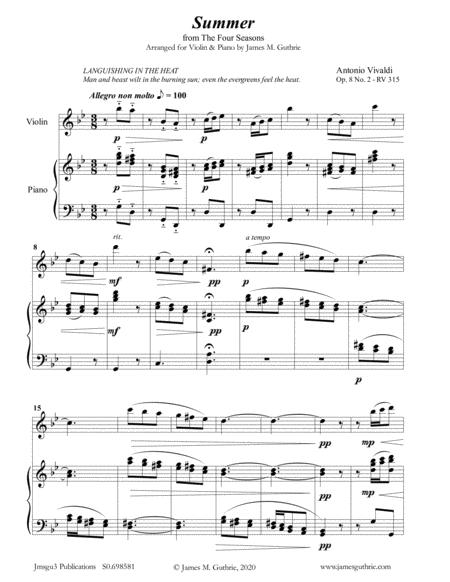

Vivaldi’s first known activity as a musician came in 1696, when he was engaged as an extra violinist by Saint Mark’s Cathedral. Indeed, he became known in musical circles as “il prete rosso” – “the red priest” – as a result of his standing in the Church and his striking red hair. In any event, the composer returned from most clerical duties in 1705, although he remained a priest at least nominally.

Vivaldi later claimed that he did so because of what he called his “tightness in his chest”, but according to another account he had suddenly thought of a good musical theme and wanted to write it down at once. On one occasion he failed to finish saying Mass and retired to the sacristy. A few years after his ordination, however, he was excused from liturgical duties under questionable circumstances. He began religious studies at 15 and was ordained ten years later. While showing considerable musical talent, Vivaldi nevertheless prepared for the priesthood. His early years also saw the onset of what would be a lifelong respiratory ailment, probably asthma,that would impact but certainly not curtail his career. While the rest of his family does not seem to have been particularly musical, Vivaldi became an outstanding violinist, as a number of reports testify. It was undoubtedly from his parent that the young Vivaldi first learned to play the instrument himself.

His father played the violin in the resident orchestra of the city’s most famous monument, the great Cathedral of Saint Mark. Vivaldi was born in Venice on March 4, 1678. His energetic instrumental writing contributed importantly to popularizing the concerto, a fairly new compositional genre during his day, and had a great impact on his musical contemporaries, most notably Johann Sebastian Bach. An artist of astonishing vigor and productivity – he wrote more than 450 concerto, 40 operas and many other solo, chamber and vocal works over the course of his career – Vivaldi was one of the most innovative and influential musicians of his day. Of the many remarkable violinist-composers Italy produced during the Baroque era, the most remarkable of all was Antonio Vivaldi. It is significant in this regard that the great composers of the Italian Baroque – men like Arcangelo Corelli, Guiseppe Tartini, Pietro Locatelli, Francesco Veracini, Giovanni Legrenzi and Francesco Geminiani – tended to be violinists rather than keyboard players, as the leading musicians of northern Europe were. At the same time, their efforts to maximize the natural expression of instruments, particularly of the violin, resulted in writing of unprecedented rhythmic verve. Their fondness for lyrical expression resulted in an unprecedented melodic warmth and sweetness, along with an increasingly expressive harmonic vocabulary. Eventually, composers began taking advantage of the natural expressive abilities of new instruments developed by virtuoso instrument makers.īy exploiting the specific traits of each instrument, Italian composers brought a new sort of liveliness to music in the years around 1700. In the fist half of the Baroque, composers mainly tried to mimic the homogenous sound of vocal music in their instrumental works. Among other things, they adapted the type of sensuous and dramatic singing born in the opera house to other genres, including instrumental music.

Italian composers led the way in exploring these new areas of musical expression. The two most important developments in Baroque music were the emergence of non-religious vocal music, opera, and the rise of purely orchestral music. Before this time, in the Renaissance and Middle Ages, European music had been largely religious and choral. This period, known in music history as the Baroque era, was one of great innovation. The seventeenth and early eighteenth centuries saw an extraordinary flowering of musical culture in Italy.


 0 kommentar(er)
0 kommentar(er)
